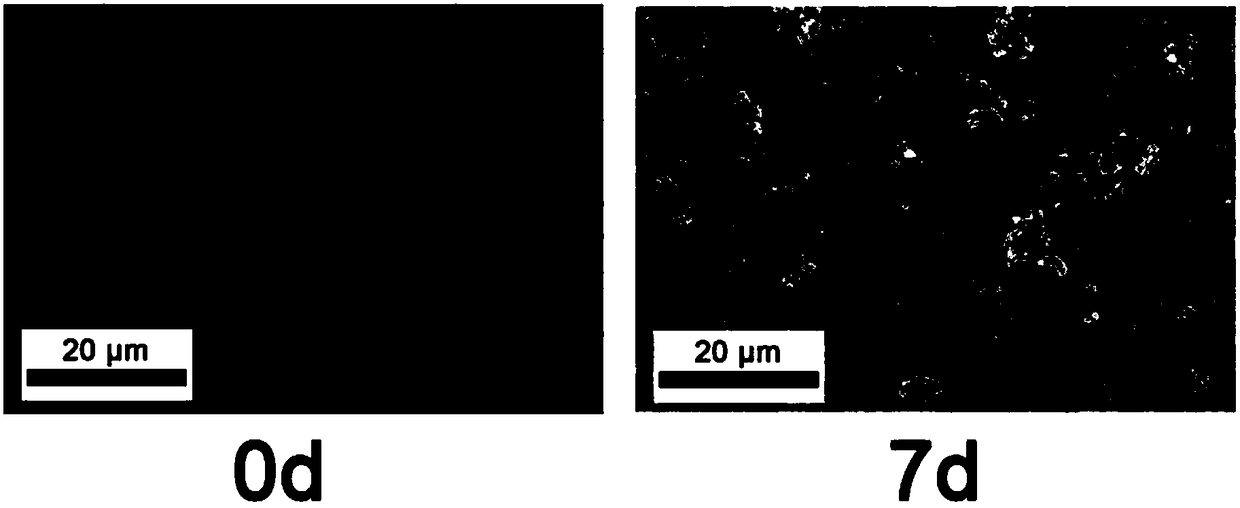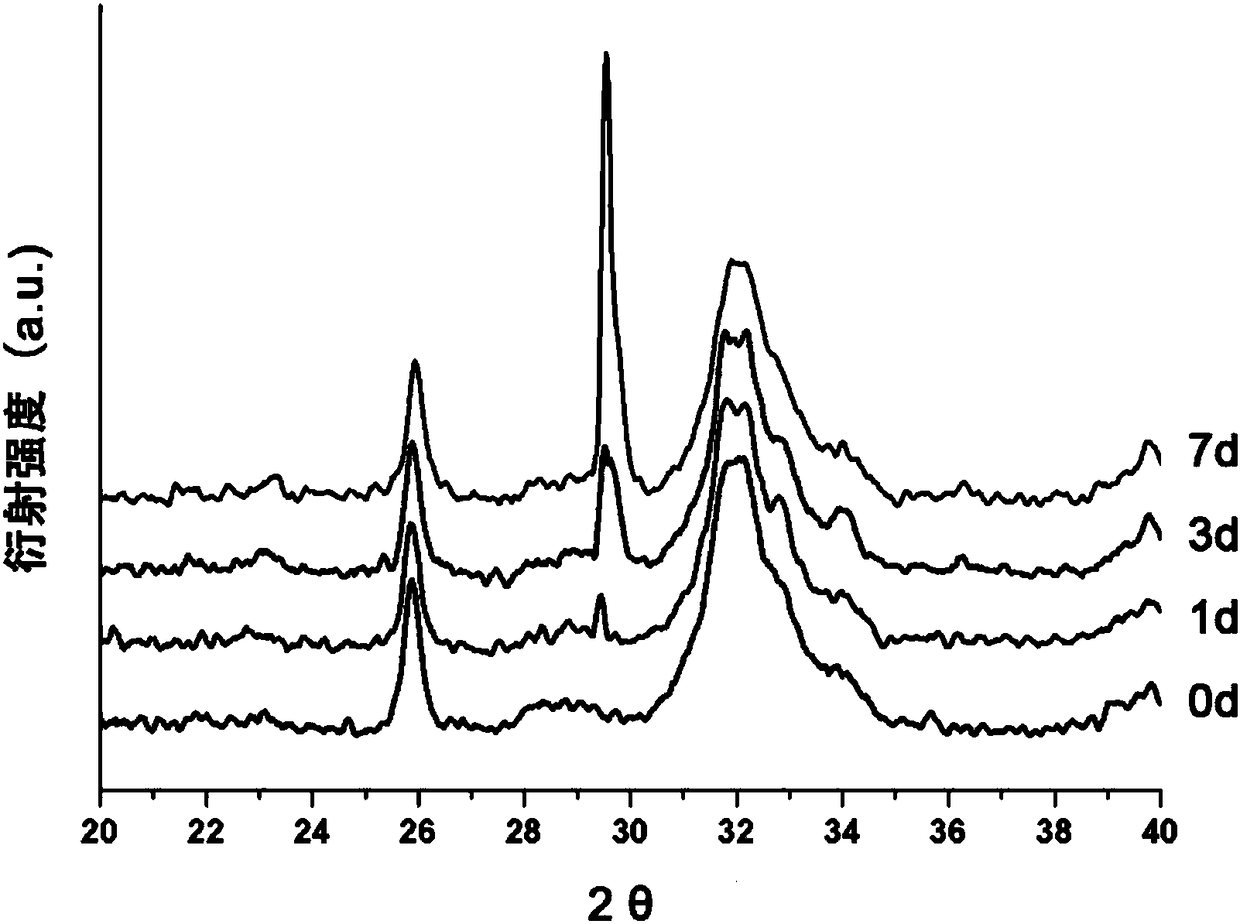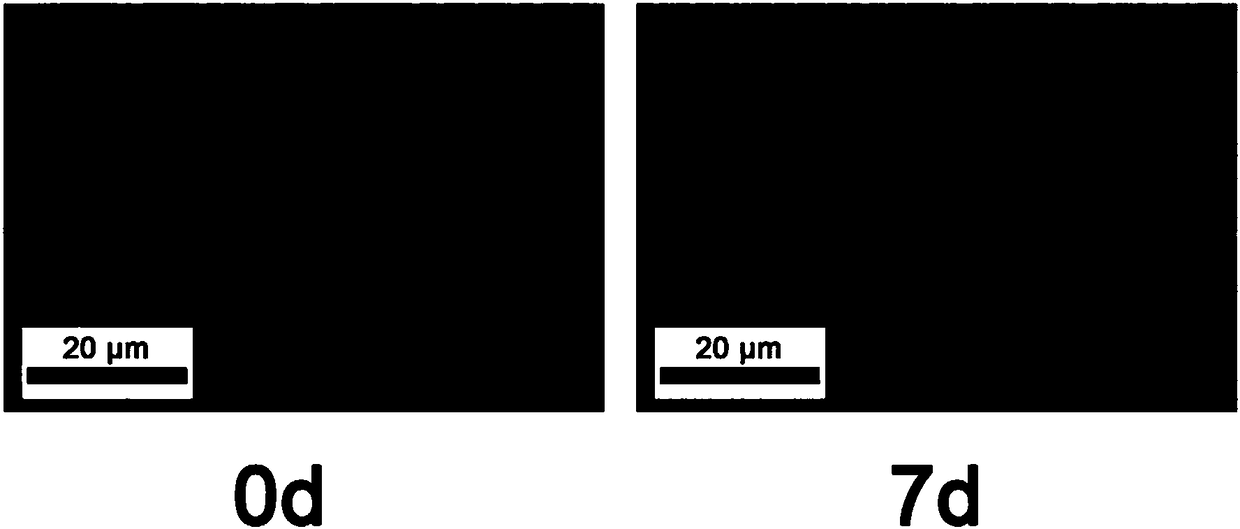Liquid-phase mineralizing precursor and method of repairing demineralized dentine
A technology of precursors and dentin, applied in dentistry, dental prostheses, pharmaceutical formulations, etc., can solve problems such as high recurrence rate, unsatisfactory long-term stability, darkening of the face and erosive gums, etc., to achieve easy-to-obtain raw materials, Achieve long-term stability and simple system
- Summary
- Abstract
- Description
- Claims
- Application Information
AI Technical Summary
Problems solved by technology
Method used
Image
Examples
Embodiment 1
[0035] (1) Add 5g CaCO 3 Suspend the powder in 1L of distilled water, pass CO at room temperature 2 Gas 2h. Filter excess CaCO 3 , and then CO was introduced at room temperature 2 Gas 30min.
[0036] (2) Measure and adjust Ca 2+ At a concentration of 4mM, add PAA and MgCl 2 powder, the concentrations are 20 μg / mL and 12 mM respectively, and mixed uniformly to obtain calcium carbonate mineralization precursor solution.
[0037] (3) Collect caries-free isolated teeth, and cut dentin slices with a thickness of 1 mm perpendicular to the long axis of the teeth with an Isomet slow slicer. The exposed dentin slices were polished with 600-grit SiC sandpaper for 60 s to produce a standard smear layer. The obtained dentin slices were soaked in 0.5M EDTA solution (pH 7.4) for 5 min, then rinsed with a large amount of distilled water, and ultrasonically treated for 1 min to obtain a dentin demineralization model.
[0038] (4) Take 250 mL of the calcium carbonate mineralization pre...
Embodiment 2
[0043] (1) Add 5g CaCO 3Suspend the powder in 1L of distilled water, pass CO at room temperature 2 Gas 2h. Filter excess CaCO 3 , and then into CO 2 Gas 30min.
[0044] (2) Measure and adjust Ca 2+ At a concentration of 3 mM, add pAsp and MgCl 2 powder, the concentrations are 30 μg / mL and 10 mM respectively, and mixed uniformly to obtain calcium carbonate mineralization precursor solution.
[0045] (3) Collect caries-free isolated teeth, and cut dentin slices with a thickness of 1 mm perpendicular to the long axis of the teeth with an ISOMET slow slicer. The exposed dentin slices were polished with 600-grit SiC sandpaper for 60 s to produce a standard smear layer. The obtained dentin slices were soaked in 0.5M EDTA solution (pH 7.4) for 5 min, then rinsed with a large amount of distilled water, and ultrasonically treated for 1 min to obtain a dentin demineralization model.
[0046] (4) Take 250 mL of the calcium carbonate mineralization precursor solution synthesized i...
PUM
| Property | Measurement | Unit |
|---|---|---|
| concentration | aaaaa | aaaaa |
Abstract
Description
Claims
Application Information
 Login to View More
Login to View More - R&D
- Intellectual Property
- Life Sciences
- Materials
- Tech Scout
- Unparalleled Data Quality
- Higher Quality Content
- 60% Fewer Hallucinations
Browse by: Latest US Patents, China's latest patents, Technical Efficacy Thesaurus, Application Domain, Technology Topic, Popular Technical Reports.
© 2025 PatSnap. All rights reserved.Legal|Privacy policy|Modern Slavery Act Transparency Statement|Sitemap|About US| Contact US: help@patsnap.com



